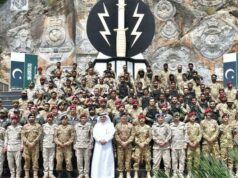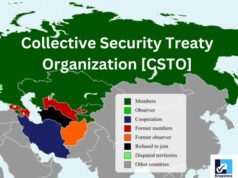By
Colonel Awadhesh Kumar, Veteran Special Forces
The Indian Navy has already planned for its third aircraft carrier, INS VISHAL, with the proposed service entry date in the late 2020s.
The 65,000-ton Vishal will be significantly larger than India’s current carrier in Service, INS VIKRAMADITYA, a45000 ton formerly the Soviet Admiral Gorshkov. The second aircraft should be handed over for pre Commission trials within months.
The second aircraft carrier, at 40000 ton, should be handed over for pre commissioning trials within months.This will be the indigenously designed and built and domestically-built VIKRANT, expected to enter service in 2020.
The choice was between going for a few more of VIKRANT Class or to catch up with others in the field.Naturally one had to leapfrog and go for 65000 ton carrier.
Once standardized we may plan say a total of four and later go for two Super Carriers as replacement for VIKRAMADITYA and VIKRANT.
As a first step, Cochin Shipyard will be constructing a dry dock of 310 m in length, 75 m in width and 13 m in depth. Foundation Stone is being laid on 01Nov18 and likely completion date is 2021.
By that time a lot of preliminary work and initial block fabrications should have been done, so as to lay down the keel in 2021, float it out in 2023 and launch it in 2027. Commissioning can be planned in 2030 and the fourth carrier of this class by 2040.
INS VISHAL will be a game changer not only for the Indian Navy but the entire Indian Ocean Region. VISHAL will have a on board air compliment of around 48 fighters, 04 AWES / Refuellers and a rotary wing of up to 12 helicopters of various types. The Navy is taking a look also at an electromagnetic launch system for its third carrier, similar to the one aboard the USS Ford.
India’s present carriers have STOBAR configurations, which uses a ski-jump to launch the air crafts, thus limiting the All Up Weight a plane can lift into the air. This means that fighters having either lesser payload, or fuel thus limiting range or duration.
India presently has 45 MIG29 K for deployment on INS VIKRAMADITYA and on VIKRANT once it enters service. However there will be a shortfall of around 8 fighters on VIKRANT and a requirement of 48 on VISHAL.
So before commissioning of the Ship VISHAL itself we must commission the air squadrons for which we need to import the aircrafts. It should either be an advanced version of MIG29K or the navalized version of Rafael to fit the scale of economics.
The Indian Navy is already searching for a foreign-sourced twin-engine fighter for the Vishal, with the U.S. F/A-18 and French Rafale in the running, and India has already ordered 36 multi-role Rafales for its air force.
This is not a blow to the plan of an Indian-made fighter for the carrier such as naval version of HAL Tejas Mk2 and the naval AMCA. These aircrafts will be ideal and in time for the balance three Carriers of VISHAL class.
Around that time the Navy may want to station a squadron each of these aircrafts also at Diu, Goa, Cochin, Aarkonam, Vijag and Andaman for providing close air support to the fleet /flotilla operating in the area.
Now imagine a scenario in which these carriers go to battle.
Most likely, India would attempt to enforce a blockade of Pakistan and use its carriers to strike land-based targets. These carriers will operate at a good stand off distance from any Pakistani defences.
Pakistan will hardly have any means to attack Indian carriers because of a defensive screen provided by the escorting ships and the carriers own sensors, sensors on its aircrafts, UAVs, Indian satellites etc. After all IN is not just talking about a net centric warfare but also going all-out for the same.
Thus, Indian carriers would be relatively safe from any enemy penetration of its defensive screen and will have all the capability to devastate the enemy with all the BRAHMOS and other missiles and the deadly air wing.
IAF Sukhois will also be there whenever and wherever required. PAF already reeling from IAF onslaught from the East will just not be seen even if the carrier group steams close to the Gwadar Port.
This makes the Indian carriers’ a war winning factor which will primarily take the fight to their enemy from the Sea. Carriers are also symbols of national prestige and an affective peace time tool for diplomacy and showing the flag.
So we wait for each Naval Command to have a Carrier Battle Flotilla and also one for the Andaman & Nicobar Command. A CB flotilla each will also be deployed at Mauritius and KamRanh Bay.



